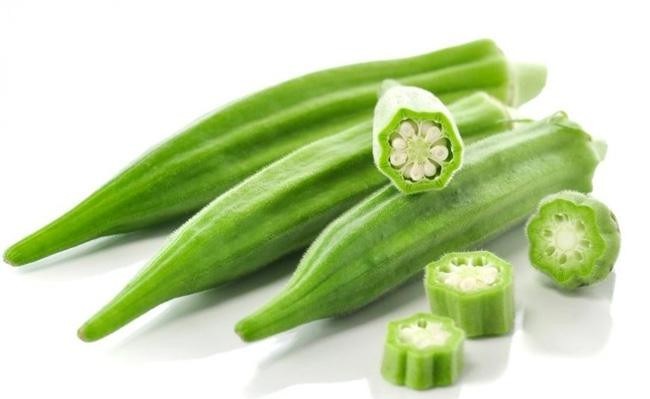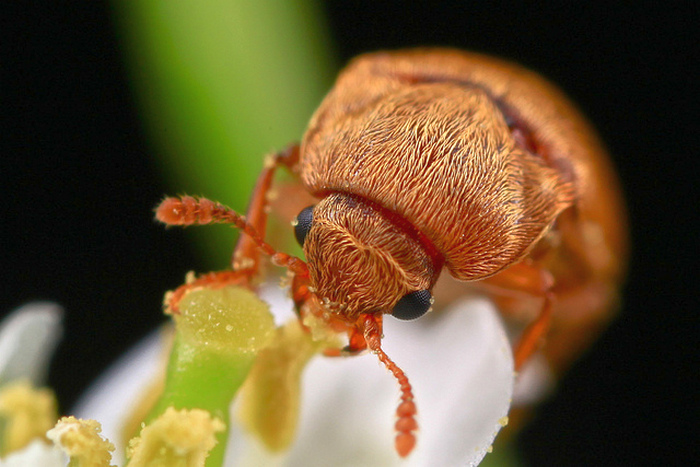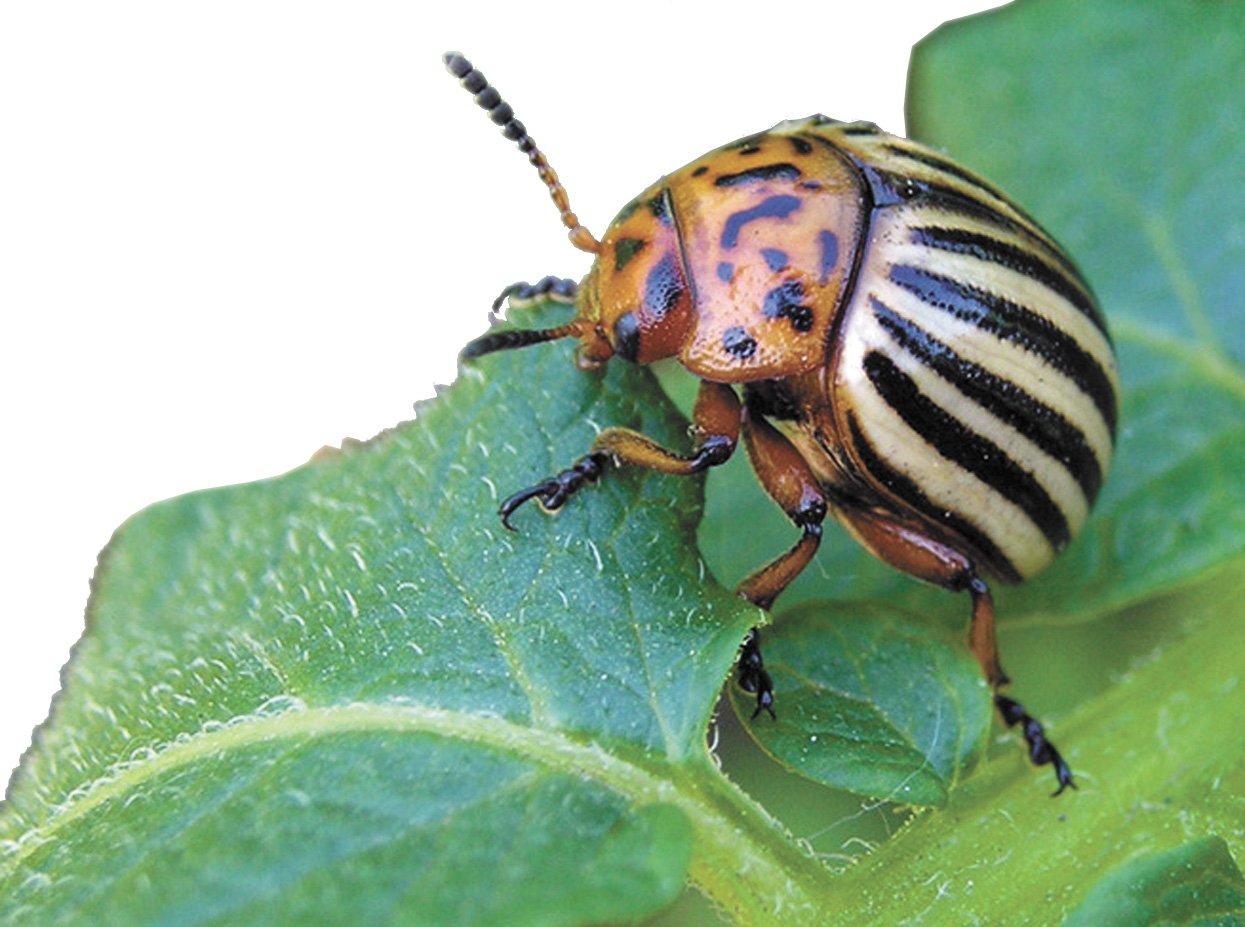In the spring, not only nature wakes up, but also pests. The appearance of a bear on the site poses a great threat to the plantings and the future harvest. It begins its activity at a temperature of the upper soil layers of 10-15 ° C.
Signs of the appearance of a bear on the site:
- wilting and death of vegetable plants;
- the presence of holes in the ground 1.5 cm wide;
- poor seed germination;
- the appearance of winding earthen passages in the form of hills, they are especially clearly visible after rain.
Bear's favorite dish are:
- tomatoes;
- peppers;
- eggplant;
- potatoes.
In addition to adult vegetable crops, the insect destroys crops of carrot, radish and cucumber seeds. Also goes to fruit and ornamental plants. Powerful jaws allow you to gnaw through any roots in its path.
Damaged plants wither and are easily pulled out of the soil. Trees and shrubs get sick for no apparent reason. During the day, one adult individual damages up to 15 plants in the backyard.
Medvedka is very fertile. One clutch is about 300 eggs. They mature in two weeks. To reach the size of a large individual, another 1 week is enough.
If you do not take action on time, you can be left not only without a crop, but also without planting on your personal plot. A terrible enemy is the bear-cabbage, every gardener needs to know how to deal with it.
Methods of protection from a bear
If traces of a pest appear in the garden, you need to immediately begin to destroy it. There are several methods of struggle, they are divided into two groups:
- Professional
- Folk.
The following means are used as professional protection:
- insecticides;
- disinfectants;
- biological products;
- scarers.
Insecticides
Chemicals of this class allow not only to get rid of adults, but also to fight the larvae. Poison from cabbage is produced in the form:
- ready-made bait;
- emulsions;
- powder.
The most common remedy for cabbage is a ready-made bait in the form of rembek and medvetox granules. When fresh minks are found, 2-4 g of granules (1 teaspoon) are placed in each of them to a depth of 3 cm. After that, each passage is closed with earth and watered. Moistening the soil is necessary to enhance the smell of the bait.
In the form of an emulsion, the chemicals regent and bazudin-extra are used. In this case, the bait must be prepared according to the following recipe. For the regent ampoule, mix with 1 kg of boiled cereal. One ampoule of basudin will make 3 kg of bait for a bear. For porridge, you can use:
- millet;
- oatmeal;
- pearl barley;
- buckwheat.
To enhance the smell, 1 tbsp of unrefined oil is added to the finished mixture. spoon for 1 kg of porridge. The bait is introduced into the furrows between the rows to a depth of 2-4 cm and covered with earth.
Bazudin is also available in powder form. He is very successful in fighting the bear. The powder is introduced into the soil during spring digging. Consumption is 10 g per 50 m² for prophylaxis. If the site is heavily affected by the pest, the rate increases, and the area is reduced to 10 m².
Disinfectants
These pesticides are designed to treat seeds and soak roots before planting:
- prestige;
- Tirana;
- celeste top.
The soaking time is 1.5-2 hours, during this period the poison soaks the plant and the bear will bypass it. You can also use root watering according to the instructions.
Biologicals
Entocide is popular among gardeners. It represents the mycelium and spores of the fungus. Getting on cabbage, the fungus penetrates into the body and germinates there. This leads to damage to internal organs and the death of the pest. There are two ways to use bioinsecticide:
- Before spring or autumn soil treatment. 100 g of a biological product is mixed with 1-2 kg of sand. The mixture is evenly distributed over 1 hundred square meters and the site is dug up.
- Soaking the seedling rhizomes and seeds just before planting. The consumption rate is 50 g per 2 liters of water.
Another biological product of interest is otmed. It is made from odorous ingredients that insect does not tolerate:
- sagebrush;
- spurge;
- pepper;
- garlic;
- fish extract.
Otmed has a deterrent effect and is used to soak plant roots.
Biologicals are good for insects and harmless to humans. This is their advantage. But in comparison with pesticides, they are inferior in efficiency.
Scarers
Noise effects cause discomfort in the bear. Craftsmen have learned how to make scarers with their own hands. For this you will need:
- a metal pole or pipe 3 meters long, which serves as a resonator;
- propeller, it can be made from a plastic bottle or a tin can.
A homemade rotating element is pushed onto the pipe with its bottom. For a good effect on the site, it is necessary to install several such structures at a distance of 5-10 m.
The ultrasonic repeller is more progressive. In addition to the bear, he will help in ridding the garden of:
- moles;
- voles;
- shrews.
Exposure to ultrasound irritates the pest and forces them to leave the uncomfortable area. The device works 24 hours a day. Batteries, accumulators, solar energy are used as power sources.
Manufacturers offer a wide range of devices. The differences lie in the depth and radius of coverage. More expensive models are equipped with switching sound modes and immunity to obstacles in the form of stones, fences and walls. The guaranteed period of expulsion of the pest is 2 weeks.
Many gardeners prefer to fight on their own and not use heavy chemical artillery. There are many ways to combat the pest, the most popular of them are:
- Soap solution. A bucket of water will need 20 g of laundry or 50 g of liquid soap. The prepared solution is poured into all the minks found. The insect will try to get out or die inside its tunnels. Be sure to arm yourself with a shovel or shovel. It will take a quick reaction to catch and destroy the creeping pests.
- Plastic barrier. When planting seedlings, you can protect the shoot from the pest. Old plastic bottles will come to the rescue, from which rings 15 cm high are cut.When planting plants, install the plastic so that its edge protrudes to a height of 3-4 cm.
- Aromatic repellents. Medvedka does not like pine needles. For scaring, alder or spruce branches are laid in the aisles. It is best to cover the needles with earth in order to preserve its smell for a long time. When planting in the hole, you can add household scraps of onion peels and orange peels. The mixture will protect the seedling roots from the pest.
- Eggshell. You will need it for a trap, which should be located in the place of the greatest accumulation of the pest. The shell is finely ground and unrefined sunflower oil is added. The mixture is buried in the selected area, eating it, the pest will soon die.
- Ammonia. Consumption per bucket will be 3-4 tablespoons of ammonia emulsion. The plants are poured under the root with the prepared mixture. One bucket is enough for 10 plants. The use of ammonia will rid the area of cabbage.
It is important to figure out not only how to get rid of cabbage in the garden, but also what preventive measures should be taken.
Prevention
- Mandatory autumn digging. The fight against cabbage leaves begins after harvesting plants, fallen leaves and debris. In the process of digging, the tunnels prepared by the pest are disturbed. The loosening depth should be at least 15 cm.
- Restrictive barriers. If neighbors are not pest control, all efforts will be in vain. In this case, barriers will help, which will restrict the pest's access to the site. To do this, you can use slate or sheet metal, which is buried around the perimeter to a depth of 60 cm.
- Preparation of manure traps. After digging, the bear will look for a new place to lay eggs. It can be lured into pits filled with manure and covered with soil. At the first frost, the pits are opened, and manure is removed from them. The insect falls into suspended animation by this time. It will not be able to dig into the soil and will freeze.
The open pits are refilled with mullein and closed until spring. Fresh bait will attract a bear that hibernated in the ground.
In the spring, the pits need to be watered with a combustible mixture and burned along with the pests.
All methods are good for the fight, and their use in combination will protect your crop. In one season, with the right approach, you can remove 90% of the bear from the site.















